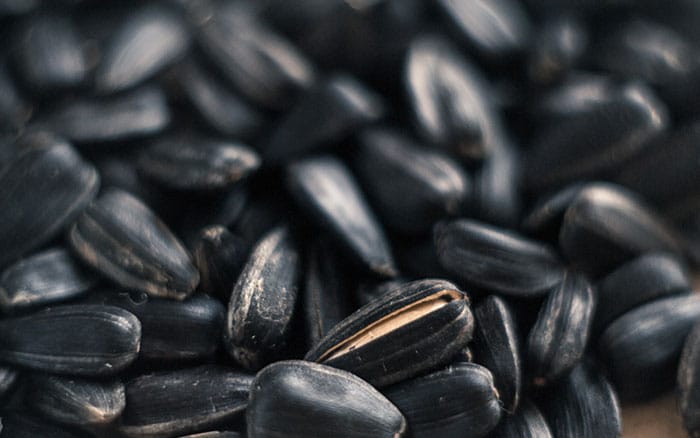In our gardens it’s a wonderful thing to watch birds come and feast on the feeders that we’ve left for them or taking a dip in the bird bath. Sitting and watching the birds enjoy your garden is a joy, but different types of bird food appeal more to different birds.
There are a few things to think about when filling up your bird feeders. Firstly, remember to keep the food fresh, rather than leaving it too long – and keep the feeder itself clean too. Another thing to bear in mind is that some bird foods can be harmful to hedgehogs. For example peanuts, sunflower seeds and mealworms are a danger to hedgehogs, so ensure these don’t spill onto the floor.
Sunflower hearts and seeds
Sunflower seeds are a perfect food year-round for birds. They’re popular with finches, robins, tits, and blackbirds as a source of fat and protein. Pop the seeds into a feeder or on a bird table.
If using a ground feeder, ensure the sunflower seeds aren’t left overnight as these can be harmful to hedgehogs. A top tip is to choose black sunflower seeds rather than the striped ones because the oil content is higher.

Fat balls and suet

These are a great option for wintertime because they are high in calories and can help small birds get through cold, long winter nights.
You can make your own fat balls for birds using my handy guide.
Peanuts
Next up are peanuts, which are loved by a wide variety of birds, depending on where they’re left. Peanuts in hanging feeders will see woodpeckers and tits, whereas ground feeders or bird tables with peanuts will see wrens, dunnocks, and robins.
When buying peanuts, avoid salted or roasted ones. Instead opt for ones that are aflatoxin free because this toxin can kill birds.

Seed mixes

For house sparrows, dunnocks, finches, blackbirds and collared doves, seed mixes are a good option. With many seed mixes available, choose wisely because buying cheaply could mean the quality is low with a bulk of grains, rice or beans that aren’t eaten by smaller birds.
If these are discarded they lead to mess as well as increasing the chance of rodents visiting your garden. Therefore, look out for mixes that include kibbled peanuts, suet pieces, and sunflower seeds.
Nyjer seeds
Goldfinches and siskins love the small black nyjer seeds that are rich in oils. Either place these on ground feeders or bird tables to attract our flying friends or use a specially made nyjer seed hopper.
For example, sock feeders which are made from nylon netting so the finches can cling onto the soft mesh whilst eating.

Insects and mealworms

Mealworms are available live or dried, but ensure they come from a reputable seller. When buying dried, soaking them for an hour can add moisture which makes it easier for small birds to digest them.
These will be enjoyed by house sparrows, starlings, robins, and blue tits.
Berries
Growing bushes full of berries is a great way of feeding birds, looking great and attracting other wildlife too.
Choose from bushes such as pyracantha, barberry, cotoneaster, hawthorn, and holly to feed the birds whilst adding structure and beauty to your garden.

Kitchen scraps
Though this shouldn’t be a large proportion of what you leave out for birds, a small amount of kitchen scraps is safe. Small amounts of bread, cereals, meat, and cheese can be left out for them, but avoid anything high in sugar or salt.
If leaving out rice, ensure it is cooked because uncooked rice can swell in the birds’ stomach when digested.
Fruit

An excellent winter food for blackbirds and thrushes are halved apples. Other fruits that can be used are raisins and sultanas, soaked before putting them out to hydrate them.
However, if you have dogs don’t use sultanas or raisins as they are highly toxic to them.

Leave A Comment